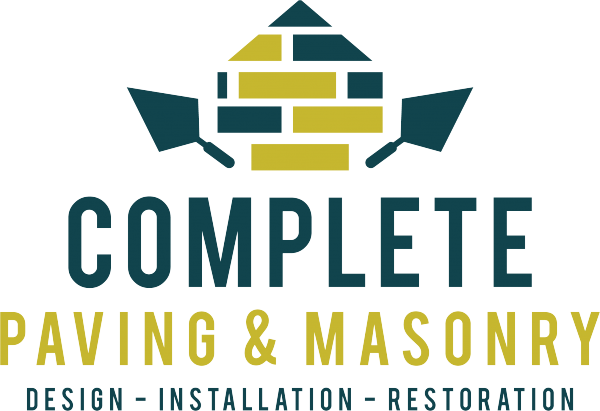Basement Waterproofing Paint
Basement waterproofing paint is a popular choice for protecting basement walls from water damage. It acts as a barrier, preventing moisture from seeping through the concrete and causing issues such as mold growth and structural damage. When applied correctly, Basement Waterproofing Norwood can effectively seal the walls and provide a durable layer of protection.
One key benefit of using basement waterproofing paint is its ease of application. Homeowners can easily apply the paint themselves using a roller or brush, making it a convenient and cost-effective solution for waterproofing basements. Additionally, basement waterproofing paint is available in a variety of colors, allowing homeowners to choose a finish that complements their existing decor while also ensuring the walls are well-protected from water damage.
Application and Benefits
Basement Waterproofing Norwood is a crucial step in maintaining a dry and stable basement environment. The application of basement waterproofing paint is a popular choice for homeowners looking to protect their basements from moisture damage. This type of waterproofing can be easily applied to interior walls and floors with a brush, roller, or sprayer, providing a protective barrier against water infiltration. The benefits of using basement waterproofing paint include preventing mold and mildew growth, reducing musty odors, and extending the lifespan of the basement’s structure.
Another effective basement sealing technique is the use of sealants, which can help fill cracks and gaps in the foundation to prevent water seepage. By carefully selecting the appropriate sealant and applying it correctly, homeowners can significantly reduce the risk of water damage and leaks in their basements. This method not only helps in maintaining a dry basement but also adds an extra layer of protection against potential moisture problems. When properly applied, sealants can enhance the overall durability and longevity of the basement, ensuring a safe and comfortable living space.
Basement Sealing Techniques
Basement Sealing Techniques involve the application of sealants to effectively prevent water infiltration in residential and commercial structures. These techniques are vital for ensuring a dry and mold-free environment in basements. Basement Waterproofing Norwood professionals recommend using high-quality sealants that can withstand moisture penetration and provide long-lasting protection.
When considering Basement Sealing Techniques, it is essential to analyze the specific needs of the basement. Factors such as the type of foundation, water pressure, and existing moisture levels play a crucial role in determining the most suitable sealant for the job. Proper application of the sealant is key to ensuring a tight seal and effective waterproofing for the basement.
Sealant Selection and Application
When it comes to basement waterproofing in Norwood, selecting the right sealant is crucial for long-lasting protection against moisture infiltration. The choice of sealant should be based on factors such as the type of foundation, severity of water seepage, and budget constraints. Common sealant options include epoxies, silicates, and polyurethanes, each with unique properties suited for different waterproofing needs.
Proper application of the selected sealant is essential to ensure effective waterproofing of the basement. Thoroughly clean the surface, fill any cracks or gaps, and follow the manufacturer’s instructions for application and drying times. Applying multiple coats may be necessary for increased protection, especially in areas prone to heavy water intrusion. Seeking professional guidance for sealant selection and application can help homeowners in Norwood achieve a secure and dry basement environment.
Moisture Barrier Installation
Moisture Barrier Installation is a crucial step in Basement Waterproofing Norwood. It involves the careful placement of a barrier that prevents moisture from seeping into the basement walls and causing damage. The installation process typically begins with thorough cleaning and preparation of the walls to ensure a smooth surface for the barrier to adhere to.
Once the walls are prepped, the moisture barrier is carefully applied in overlapping sheets to create a continuous barrier against moisture intrusion. It is essential to pay close attention to the details during installation to ensure that there are no gaps or areas left unprotected. Proper installation of the moisture barrier is key to ensuring the long-term effectiveness of the basement waterproofing system in Norwood.
Vapor Barrier Placement
Vapor barrier placement is a crucial step in Basement Waterproofing Norwood. This protective layer functions by preventing moisture from seeping through the walls and into the basement, ensuring a dry and habitable space. Proper installation of the vapor barrier involves meticulous attention to detail to guarantee its effectiveness in combating moisture infiltration.
During the vapor barrier placement process, it is essential to ensure a seamless application without any gaps or overlaps that could compromise its efficacy. The barrier should be carefully cut and fitted to match the dimensions of the walls, creating a continuous shield against moisture. By adhering closely to the installation guidelines and securely fastening the vapor barrier in place, homeowners can safeguard their basement against water damage and maintain a safe and dry environment for their property.
FAQS
What is basement waterproofing paint?
Basement waterproofing paint is a type of waterproofing technique that involves applying a specialized paint or sealant to the interior walls of the basement to prevent moisture from seeping through.
How is basement waterproofing paint applied and what are its benefits?
Basement waterproofing paint is typically applied like regular paint, using a brush or roller. The benefits of using waterproofing paint include preventing mold and mildew growth, reducing moisture levels, and increasing the overall durability of the basement walls.
What are basement sealing techniques?
Basement sealing techniques involve using sealants or coatings to create a barrier against water infiltration. This can include applying sealants to cracks, joints, or other vulnerable areas in the basement walls.
How do you select and apply sealants for basement waterproofing?
When selecting sealants for basement waterproofing, it’s important to choose a high-quality product that is specifically designed for your basement’s needs. The application process typically involves cleaning the area thoroughly, applying the sealant according to the manufacturer’s instructions, and allowing it to dry completely.
What is moisture barrier installation?
Moisture barrier installation is a type of basement waterproofing that involves installing a physical barrier, such as a vapor barrier, to prevent moisture from seeping into the basement.
Where should vapor barriers be placed for effective moisture barrier installation?
Vapor barriers should be placed on the interior walls of the basement, between the insulation and the drywall. This helps to prevent moisture from condensing on the walls and causing damage.
Related Links
Basement Waterproofing Norwood
Which basement waterproofing system is best?
What is the most cost effective way to waterproof a basement?
Is waterproofing a basement worth it?



